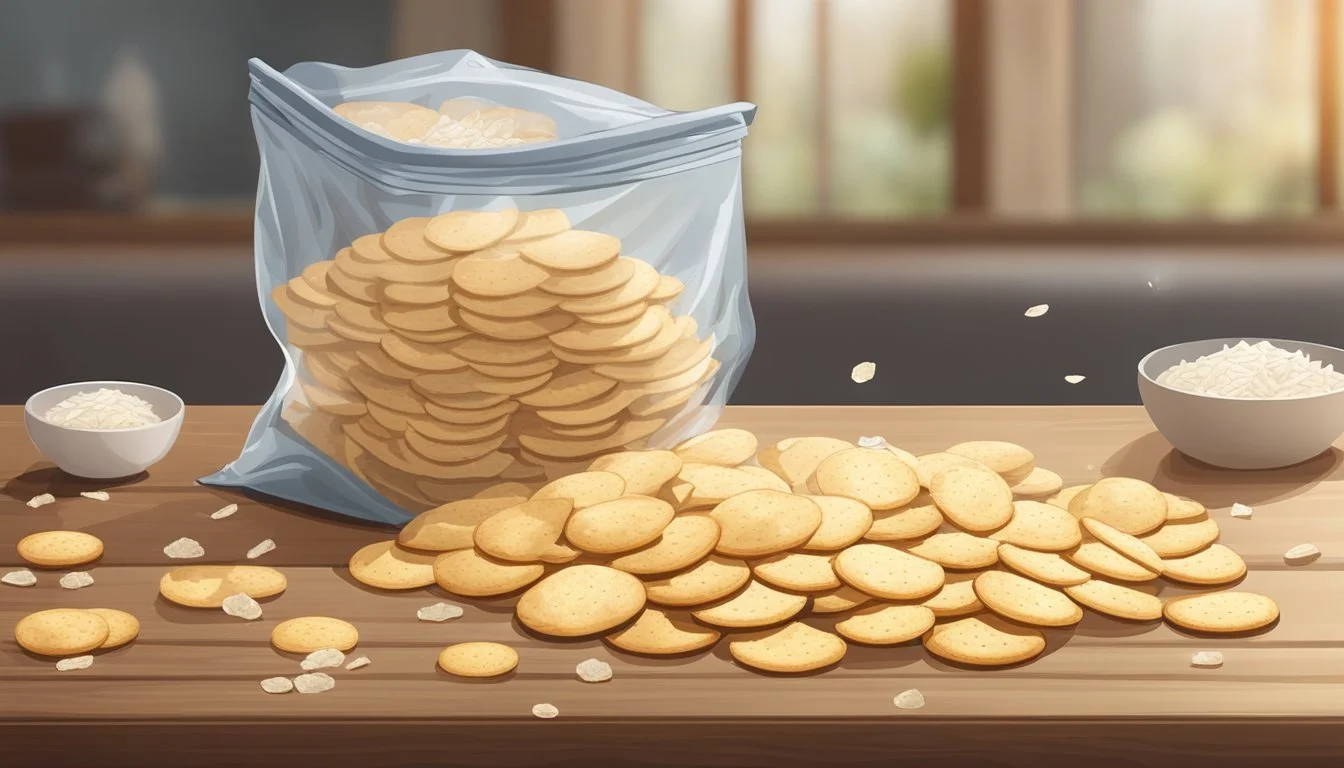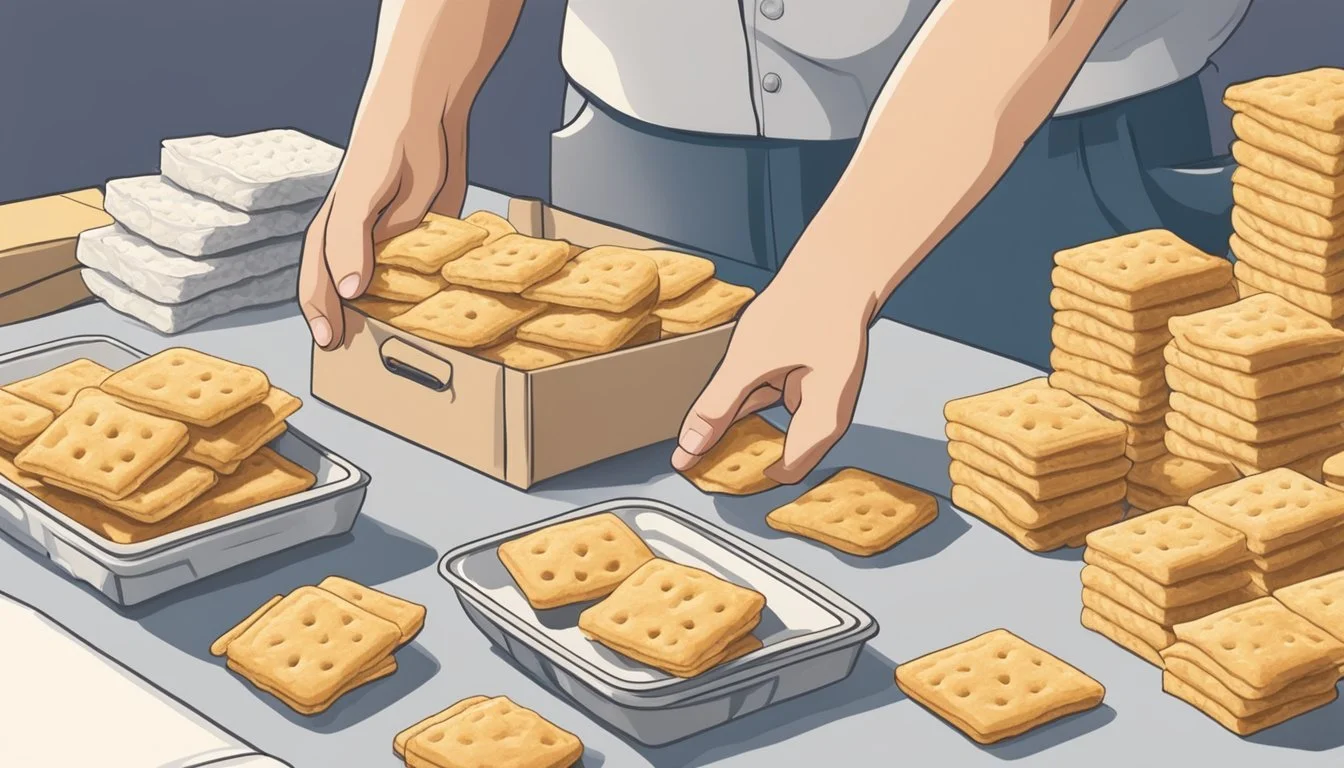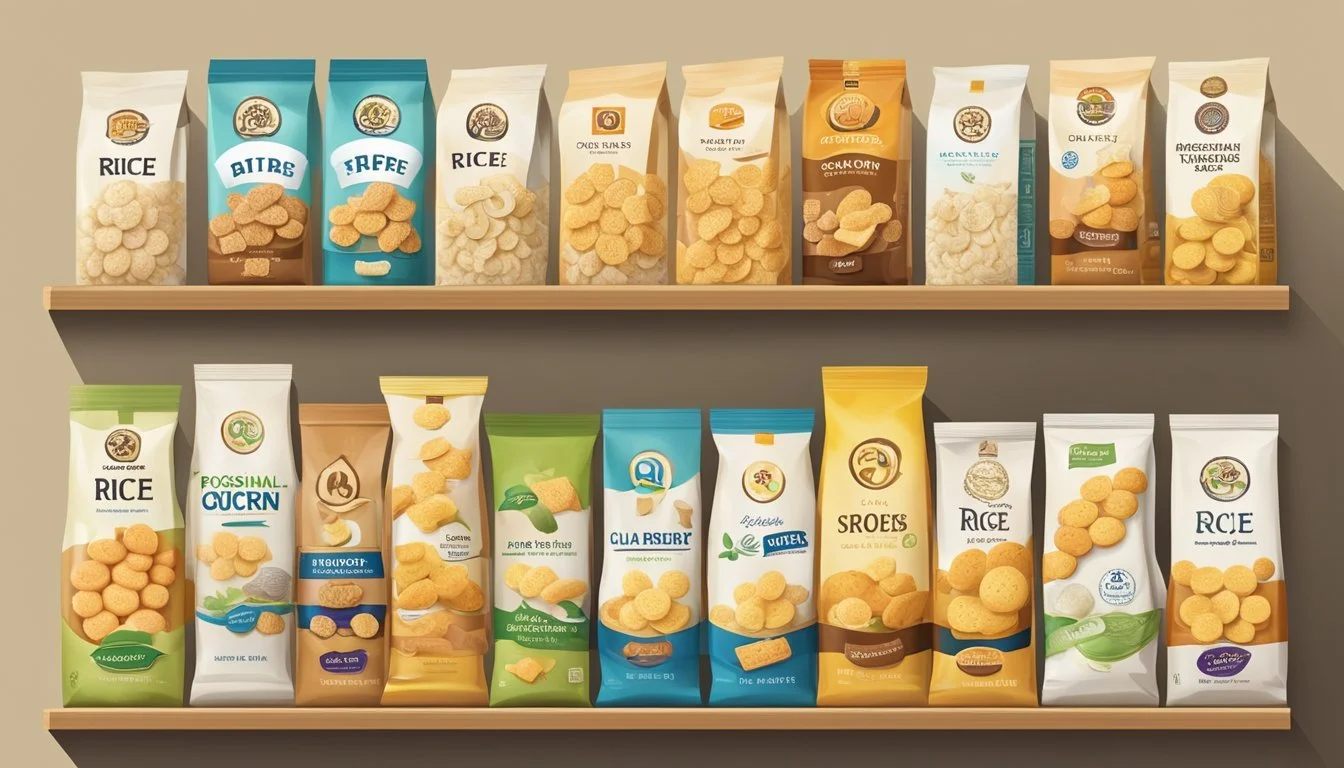Do Rice Crackers Go Bad?
Shelf Life and Storage Tips
Rice crackers, like many other snack foods, have a shelf life that should be considered to maintain their quality, flavor, and texture. Properly stored, unopened rice crackers can last for about 6 to 9 months past their packaging date, preserving their best quality for a significant period. Storage in a cool, dry place is imperative to avoid moisture and other contaminants that could compromise their freshness.
When the package is opened, the clock starts ticking differently. An opened package of rice crackers is best consumed within 1 to 2 months for optimal taste and texture. The key is to keep the package tightly sealed to prevent exposure to air and moisture which can lead to staleness and potential quality deterioration.
While rice crackers can go bad and become stale or unpalatable over time, they rarely become moldy or rancid if stored correctly. The primary concern is typically a decline in their crisp texture and vibrant flavor, which are hallmarks of their appeal. Readers should focus on proper storage methods to enjoy the full lifespan of their rice crackers.
Understanding Rice Crackers
Rice crackers are a versatile snack enjoyed worldwide. They come in various types and often include specific ingredients and additives, which contribute to their unique flavors and textures.
Types of Rice Crackers
Rice crackers can be broadly categorized into two main types: senbei and arare. Senbei are typically larger and have a crunchy texture, often flavored with soy sauce or sugar. In contrast, arare are smaller, bite-sized crackers that come in numerous shapes and flavors, including sweet, salty, and spicy variants.
Both types of rice crackers are popular in Japan and are often enjoyed as a part of tea ceremonies or as everyday snacks. Their preparation methods can result in different textures, from crispy to slightly chewy, depending on the ingredients and cooking techniques used.
Common Ingredients and Additives
The basic ingredients of rice crackers usually include rice flour, water, salt, and oil. Sometimes, butter or spices are added to enhance flavor. Many rice crackers are gluten-free, making them a suitable option for those with gluten sensitivities.
Additives like cheese powder, sweeteners, and preservatives are often used to prolong shelf life and add variety to the flavors. High sodium content is a common concern, so it is essential to check nutrition labels. Some rice crackers may also contain artificial colors or flavorings, which could pose health concerns if consumed in large quantities.
Shelf Life and Expiration
Unopened rice crackers can maintain their freshness for several months. However, once opened, factors such as storage conditions and post-opening handling become crucial in determining their longevity.
Determining Shelf Life
Unopened rice crackers typically have a shelf life ranging from 6 to 9 months, depending on the brand and packaging. The best-by date on the package is a good indicator of peak quality.
Once the package is opened, it is best to consume the crackers within 1 to 2 months. To extend their shelf life, keep them in a cool, dry place. Using an airtight container or tightly resealed packaging helps prevent moisture and contaminants from affecting their quality.
Signs of Spoilage and Staleness
Several signs indicate that rice crackers have passed their peak quality:
Texture: Crackers that have become stale will lose their crispness and may feel soft or chewy.
Flavor: A rancid taste often indicates that the oils in the crackers have spoiled.
Odor: An off odor can signal spoilage even if there are no visible signs.
Color: Any unusual color changes may suggest that the crackers are no longer fresh.
Mold: Visible mold is a surefire sign that the product should be discarded immediately.
By regularly checking these signs, one can ensure that rice crackers are consumed while they are still at their best quality.
Proper Storage Solutions
To ensure rice crackers remain fresh and enjoyable, they must be stored in specific conditions and containers that protect them from moisture, air, and other contaminants.
Ideal Storage Conditions
Rice crackers should be kept in a cool, dry area to maintain their quality. Temperature and humidity are critical factors. A pantry is an excellent storage location as it is usually dry and has a stable temperature.
If stored in a refrigerator, the cool environment can extend the crackers' shelf life, although this is less common for crackers. Heat and humidity should always be avoided as they can cause crackers to lose their crispness and develop molds.
Packaging and Containers
Proper packaging is essential for extending the shelf life of rice crackers. Airtight containers such as mylar bags, vacuum-sealed jars, and mason jars are ideal for storing opened crackers. By using oxygen absorbers, moisture and air exposure can be minimized further.
For long-term storage, placing sealed bags in buckets can prevent physical damage and protect against rodents. Always ensure the packaging is tightly sealed to avoid any exposure to moisture or air. This helps maintain flavor and crispness and prevents spoilage.
Handling Opened and Unopened Packages
Properly handling both opened and unopened rice cracker packages is essential to maintain their quality and ensure they remain safe to eat. The key considerations include storage conditions, sealing methods, and potential risks from moisture and air exposure.
Dealing with Unopened Packages
Unopened rice cracker packages can last for 6 to 9 months if stored in a cool, dry place. It's critical to keep them away from moisture to prevent spoilage. Manufacturers typically design packaging to be airtight, protecting the contents from air and moisture.
An unopened package should remain tightly sealed until you are ready to consume the crackers. Avoid storing rice crackers near heat sources or in areas with fluctuating temperatures as this can affect their quality. For long-term food storage, consider placing the unopened packages in airtight containers.
Managing Opened Packages
Once a rice cracker package is opened, it is more vulnerable to moisture and air, which can lead to staleness and loss of texture. Opened packages should be consumed within 1 to 2 months for the best taste. Ensure that the package is tightly sealed after each use.
Use resealable bags or airtight containers to store the opened crackers. Clips can also be effective if they can completely seal the package. Absorbent materials like silica gel packets can help to reduce moisture, preserving the crackers' crispiness. Always store opened packages in a cool, dry environment to maximize their shelf life.
Safety and Health Considerations
When considering the safety and health aspects of rice crackers, it is vital to identify signs of spoilage and be aware of allergens and dietary restrictions that may affect different individuals.
Identifying Unsafe Crackers
Rice crackers can go bad due to factors such as improper storage or the presence of moisture, leading to spoilage. Signs to watch for include a loss of crispness, changes in color, or unusual odors. Spoilage can result from microbial growth, including bacteria and mold. Crackers past their expiration date are more likely to be unsafe to eat.
Proper storage is essential to maintain their safety. Storing rice crackers in a cool, dry place and ensuring they are tightly sealed can help prevent microbial growth and extend their shelf life.
Allergens and Dietary Restrictions
Rice crackers are generally gluten-free, making them suitable for individuals with celiac disease or gluten sensitivities. However, some varieties include ingredients that might be problematic for those with allergies or dietary restrictions. For instance, rice crackers flavored with peanut butter or containing nuts can pose risks for those with nut allergies.
Always check the ingredient list to ensure the crackers meet your dietary needs. If you have multiple food sensitivities, it is also beneficial to choose plain varieties without added flavors or preservatives.
Popular Brands and Varieties
Rice crackers come in diverse varieties, ranging from traditional Japanese snacks to popular commercial brands available globally. Here’s a look at some of the most well-known options and what makes them distinct.
International Rice Crackers
Senbei and Arare are two traditional Japanese rice crackers, offering unique textures and flavors. Senbei are typically larger, crunchy, and sometimes flavored with soy sauce. Arare, on the other hand, are smaller and often come with a sweet or savory coating. Both are popular as snacks in Japan and widely appreciated for their distinct taste and cultural significance.
Other international varieties include:
KA-ME rice crackers known for their Asian-inspired flavors.
SHIRAKIKU BRAND focuses on authentic Japanese snacks.
Sesmark offers gluten-free options catering to health-conscious consumers.
Commercial Rice Crackers in the Market
There are several commercial brands available that provide a variety of rice crackers with different flavors and textures.
34 Degrees Original Crisps: Thin, crispy crackers that pair well with cheese and dips.
Wasa Crispbread: Known for its sturdy texture and whole grain content.
Excelsior Water Crackers: Popular in the Caribbean, notable for their mild flavor.
Ritz Original: Although not rice-based, they are frequently compared due to their widespread popularity.
Wheat Thins and Triscuit: Similar to rice crackers in terms of snacking options but made from wheat.
These brands offer options for various dietary preferences and taste preferences, making rice crackers a versatile snack choice.
Maintaining the Quality of Rice Crackers
Proper storage is essential to maintain the quality and taste of rice crackers. Factors such as moisture, air, and improper sealing can lead to deterioration, affecting both flavor and texture. Below are some methods to prevent these issues and ensure lasting freshness.
Preventing Deterioration and Rancidity
To prevent rice crackers from becoming rancid, it is crucial to store them in a cool, dry place. High humidity accelerates fat oxidation in the crackers, making them taste off and smell unpleasant. Sealed containers or airtight bags can help maintain freshness by minimizing exposure to air and moisture.
Use oxygen absorbers to reduce the amount of oxygen within the storage container. Oils and fats in rice crackers can go rancid when exposed to oxygen, leading to the development of off-flavors and odors.
Inspect packaging for any damage or improper sealing, which can let moisture and air in. For already opened crackers, employ airtight clips or ties to tightly close the packaging.
Utilizing Desiccants and Freshness Packs
Desiccants, such as silica gel packets, are effective for keeping the environment inside the packaging dry. These packets absorb moisture, which is crucial in preventing the crackers from becoming soggy and maintaining their crunchiness.
Oxygen absorbers can be used alongside desiccants to eliminate oxygen inside the packaging. These packs can significantly reduce the chance of rancidity caused by oxidized fats and oil in the crackers.
Some companies add freshness packs in the packaging to maintain quality. These packs often contain a combination of both desiccants and oxygen absorbers, providing dual protection against moisture and air. Including a small pack of baking soda can also help absorb unwanted odors, keeping the crackers fresh.
Serving and Portioning
Portion control and pairing rice crackers with other foods can enhance both their nutritional value and taste. Different serving sizes and combinations with various spreads and toppings can make rice crackers a versatile addition to a balanced diet.
Suggested Portion Sizes
An appropriate serving size for rice crackers is typically around 30 grams. This amount usually translates to 10-15 crackers, depending on the brand and variety.
Caloric Content:
One serving of rice crackers (30 grams) contains approximately 120 to 150 calories.
Caloric content can vary by brand and flavor.
Nutritional Considerations:
Opt for brown rice or wholegrain varieties when possible. These options often provide additional fiber and nutrients compared to their plain counterparts.
Maintaining proper portion sizes is essential, especially when managing caloric intake. Remember to keep servings reasonable to enjoy rice crackers as part of a balanced diet without overindulging.
Pairing with Other Foods
Pairing rice crackers with other nutritious foods can turn them into a more satisfying and balanced snack. Consider the following combinations:
Proteins: Low-fat cheese, peanut butter, or hummus can be paired to add protein.
Vegetables: Adding slices of cucumber, bell peppers, or cherry tomatoes enhances both flavor and nutritional content.
Nuts and Seeds: Topping rice crackers with nuts or seeds can provide healthy fats and texture.
Examples:
Combination Added Benefit Rice crackers + hummus Increased protein and fiber Rice crackers + peanut butter Healthy fats and protein Rice crackers + low-fat cheese Calcium and protein
Incorporating these pairings can help maintain a balanced diet while enhancing the taste and nutritional profile of rice crackers.








